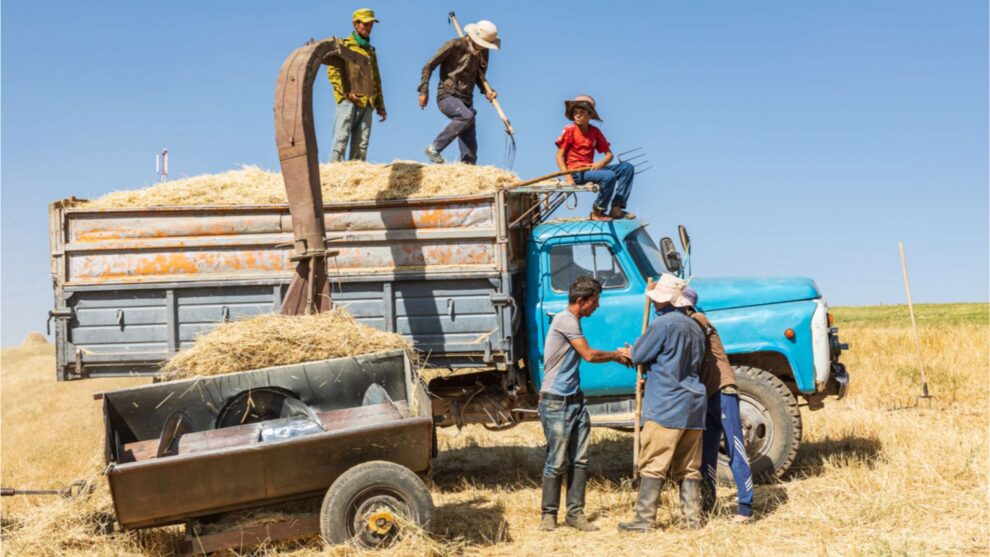Why do we have an overproduction of onions and carrots in one season, and a shortage of them in another?
Why do local authorities force farmers to plow their sown fields in the spring and plant something else instead? The thing is that Tajikistan has a meager agricultural market, unstable agricultural production and, most importantly, we do not have a processing industry.
As part of the Concept for the creation and development of agro-industrial clusters in the Republic of Tajikistan for the period until 2040, the country is implementing a new Program for the development of the agri-food system and sustainable agriculture for the period until 2030.
But what were the results of the previous Agricultural Reform Program, designed for 2012-2022?
It can be noted that we have not entirely managed to implement land reform safely according to the mechanisms that were indicated and determined by the government.
When reforming arable land, pastures and the processing industry, miscalculations were made, as a result of which we did not achieve the formation of truly autonomous and independent farmer-entrepreneurs.
The reform of livestock farming also did not get back on track, and currently the owners of herds and herds are mercantile people.
Planned anarchism
Here’s an example. The Rasht region has good conditions for the production of fruits and potatoes, but there is not a single agro-industrial point in this region.
Or another example. In one season we have an overproduction of onions and carrots, such that farmers suffer heavy losses, and in another season, due to planned anarchism, a shortage of these products is created and prices rise.
Or, according to the law, farmers must be independent. But there are examples when they sow winter wheat in the fall, and in the spring, with the intervention of local authorities, they plow up wheat fields with still unripe grain and are forced to plant potatoes or cotton.
Unstable prices for meat and milk in the markets are also associated with an imbalance in the area of forage crops, which causes a shortage and high cost of feed.
How to fix errors?
Only by adopting and correctly implementing clustering will we be able to correct the miscalculations and mistakes that were made during the period of agricultural reform. I would like to draw the attention of responsible managers of the agro-industrial complex that when creating clusters, we will be able to arithmetically calculate the consumer basket within the country for all agricultural products.
We can strengthen connections between value chains, support structures, buyers and processing companies. We can create a controlled agricultural market and at the same time have a good export target.
I would especially like to note the effectiveness of implementing agricultural clustering for mountainous regions, especially in GBAO and the Zeravshan region, where the formation of agricultural clusters will increase investment attractiveness.
And this, in turn, will provide a worthy contribution to the economic growth of these regions and will contribute to the sustainable development of mountain areas.
Cluster Development Council
To form and implement state policy on cluster development, it is necessary to make changes to the structure of the republic’s agricultural management and create a separate structure for policy development and interaction between participants in cluster development.
The Cluster Development Council under the Ministry of Agriculture of Tajikistan could become such a structure. After its creation, it is necessary to pay attention to the activities of existing banks within Tajikistan.
On the recommendation of the Council, it is important to ensure the interest of banks in allocating borrowed funds to farmers on a collateral and unsecured basis, at a preferential interest rate.
Coopera – the basis of the cluster
It must be recalled that the basis of clustering is the cooperation of agricultural and processing enterprises, dekhkan farms. It even requires cooperation between forestry activities and the rural population. Only by creating such cooperation will we be able to create sustainable clustering and ensure the successful operation of the entire agro-industrial complex.
We will be able to provide a nutritious diet for the population and guarantee the food security of the state.
Examples from other countries
Clustering of agriculture is one of the tools to ensure economic growth and increase the competitiveness of the economy.
In developed countries, clustering has become a natural stage in the evolution of agricultural production methods, and in developing countries, clusters are the main way to achieve world-class agricultural development and enter international markets.
The application of the cluster approach in Latin American countries in the 1990s ensured the so-called “wine revolution”, which resulted in an increase in the competitiveness of wine products on the world market.As a result, along with the traditional wine products of France, Spain, Italy, the USA and other developed countries, the products of a number of Latin American countries have also found their niche on the world market.
In Thailand, the development of agricultural clusters began with the initiative of the Faculty of Agriculture of Kasetsart University; they ensured that Thai fruit and vegetable products comply with European standards.
In China, when creating a production chain, they limited the forms of collectivism and moved towards a cluster concept for breeding large and small livestock. As a result, beef, lamb and goat meat production from this country gained access to world markets.
Why is clustering needed?
The formation of cluster associations is a form of integration interaction that has proven its effectiveness when used in various sectors of agriculture and the processing industry.
At the same time, agricultural clustering can serve as a sustainable and effective approach for organizing effective interaction and an indicator of production relations between producers of agricultural raw materials, the agricultural market and food industry enterprises.
It should be noted that in the conditions of Tajikistan today, the relevance of creating clusters is due to the fact that there is an urgent need to transition to an innovative type of development of the country’s agro-industrial complex.
It is the cluster approach that determines how the system of interconnected forms of organization of various agricultural entities works, ranging from planning, production, meeting the requirements of the agricultural market, ending with the demand of consumers and processing industries.
The main effect of clustering is also that its implementation simultaneously solves the problems of introducing a number of innovations into production to increase the competitiveness of products.
To implement the concept of creating and developing agro-industrial clusters in Tajikistan, it is important for the relevant ministries and departments not to delay the implementation of this document.
Source: Asia Plus TJ









